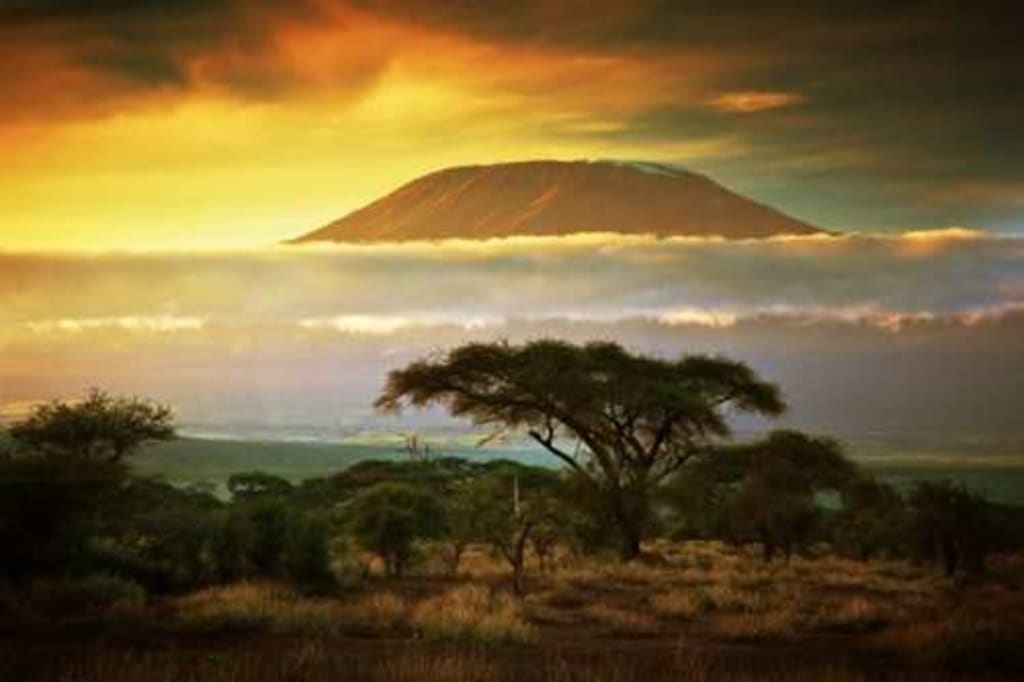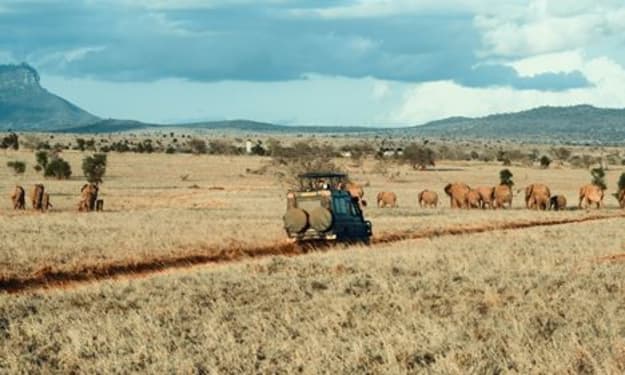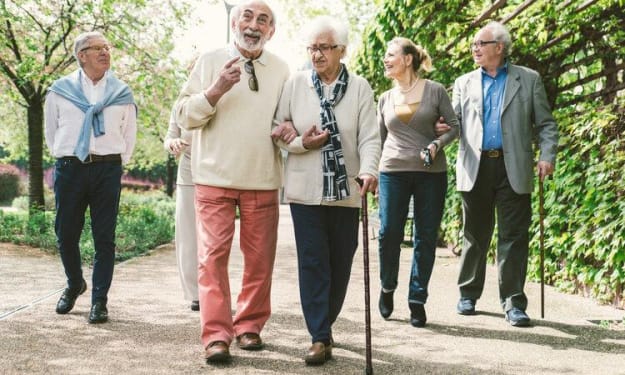7-DAY RONGAI ROUTE FROM KILIMANJARO
7-DAY RONGAI ROUTE FROM KILIMANJARO

7-DAY RONGAI ROUTE FROM KILIMANJARO There are six established routes to climb Mount Kilimanjaro - Marangu, Machame, Lemosho, Shira, Rongai and Umbwe. The Marangu, Machame and Umbwe roads all approach from the south side of the mountain. Lemosho and Shira roads approach from the west. Rongai Road approaches from the north. Except for the Marangu and Rongai roads, all roads pass through Mwerka. Mount Kilimanjaro's Rongai Route
Ascend Mount Kilimanjaro via Rongai.
Because of its remote location, this route is less crowded and provides hikers with a unique wilderness experience where they can see large wildlife such as antelope, elephants, and buffalo. Since there's generally less moisture on this side of the mountain, you'll experience less rain and a clearer view of the summit. Although it is flatter, it does not provide a high climb option, so more days for acclimatization should be chosen.
The Rongai route is one of the most straightforward routes on Kilimanjaro. Rongai is the only route from the north to Kilimanjaro, and it descends via the Marangu route. The overnight peak from Kibo Hut is extremely steep and takes the same route as the Marangu route from Gilman's Point to Uhuru Peak
weather on Mount Kilimanjaro Tanzania is so close to the equator that there aren't usually extreme winter and summer seasons; instead, there are dry and wet seasons. On Mount Kilimanjaro, the local weather is, to put it mildly, erratic. From 2100 mm per year in the rainforest zone to less than 120 mm per year in the mountainous zone, precipitation varies. Similar to how seasonal fluctuations in weather are surprising, daily temperature changes also depend greatly on height.
The answer is yes. Cultivated farmland with coffee fields and banana fields A tropical rainforest rich in flora and fauna. Heather bogs, lush alpine plants and wildflowers A high-altitude desert that appears to be the result of volcanic activity Arctic moon desert with glaciers and snow-capped peaks Each zone has a corresponding decrease in precipitation and temperature with increasing elevation at about 1,000 m (3,280 ft). Temperatures at the start of the climb range between 27°C and 32°C (70°F and 80°F) and remain relatively stable throughout the year. The term "electronic commerce" refers to the sale of electronic goods. The term "independent" refers to a person who does not work for the government. As the world's weather changes, our seasons become less predictable.
As the weather patterns around the planet drastically alter, our seasons are becoming less predictable. Typically, the rainy season lasts longer from March to May and shorter from November to December. The mountains may grow more slick at this time, and visibility is now poor. Rock climbing is best throughout the summer, which lasts from June to October. You might be fortunate enough to have the top to yourself in April or May because of the great weather and normally lower number of climbers during those months. Important information: The weather can change at any time, and our lovely mountains can hold their own! Get ready.
WHY GO THE RONGAI ROUTE? Rongai is the only route that starts from the northern circuit. It's an unspoiled path with the best wildlife viewing. Large antelopes, elephants, and buffaloes can be seen. The Rongai route has a high success rate, saves time, and has fewer altitude issues. It is flatter than other Kilimanjaro routes, it allows you to sleep on the bottom and spend more time in the mountains. It is walkable in both the 6-day Rongai route and the 7-day Rongai route. The 7-day Rongai route will give you more time to acclimate to the proper climate and is highly recommended.
From gate to gate, the Rongai path is exactly 76 kilometers long. Here are the details of the distance traveled each day based on the plan for seven days.
Day 1: 8 kilometers in length - The hike starts at Nalemuru Gate and continues into the rainforest.
Day 2: Traveling a distance of 16 km, you will enter a region of low alpine moorland where the vegetation changes to shrubs and grasses.
Day 3: Travel distance of three kilometers. Climb from Kikelelwa Camp to Mawenzi Tarn Camp.
Day 4: Acclimatization day, 0 kilometers in distance.
Day 5: Distance 9 km - A steady hike through the saddle in the west from Mawenzi Tarn Camp.
Day 6: Distance 21 km - You will climb up the steep trail on this day, which starts at midnight.
Day 7: 19 km - The last day is a lengthy one, about 20 kilometres from Horombo Camp to Marangu Gate.
HOW DIFFICULT IS THE RONGAI ROUTE? The Rongai route is moderately a difficult route however it is also a highly recommended route, especially for backpackers. The Rongai route will pass through the high density of wildlife as it starts from the northern side of the mountain. The Rongai Route 7 Days itinerary will give you an additional day for acclimatization and also allow you to sleep more in the lower elevations and spend more time in the mountains. This helps you to stay away from altitude sickness. The term "electronic commerce" refers to the sale of electronic goods.
BEST TIME TO TRAVEL THE RONGAI ROUTE The best months to climb Kilimanjaro are July through September since the weather is the most consistent and experiencing rain is less likely. Nevertheless, given its proximity to the equator, the peak can be climbed at any time of the year. It is recommended to avoid the months of April and May because they are wet. The months of May and November are also suitable times to complete the journey because the Rongai Route is located on the northern side of Kilimanjaro and is in a rain shadow.
Is the Rongai route the most direct way to Kilimanjaro? The Rongai route is regarded as the most direct route to Mount Kilimanjaro. The ride was slow but steady. The Rongai route, on the other hand, does not have a high, low sleep profile, which is said to be more difficult than the Machame or Lemosho routes. The seven-day hike is highly recommended because it allows for better acclimatization. There is no climbing technique required, but a certain level of physical fitness is required. You can learn more about preparing to climb Kilimanjaro on our Kilimanjaro training program pag
About the Creator
Enjoyed the story? Support the Creator.
Subscribe for free to receive all their stories in your feed. You could also pledge your support or give them a one-off tip, letting them know you appreciate their work.





Comments
There are no comments for this story
Be the first to respond and start the conversation.